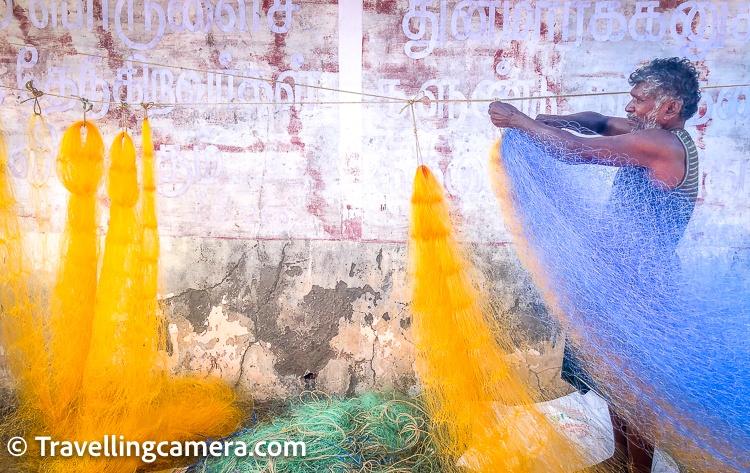
The fishermen town near Pamban Bridge in Rameshwaram is called Thangachimadam. It is a small coastal town located on Pamban Island, around 10 km from Rameshwaram in Tamilnadu. The town is known for its fishing community and is a popular destination for travelers interested in exploring the local culture and way of life.

Thangachimadam is home to a fishing harbor, where fishermen can be seen hauling in their catch of the day. Visitors can watch the fishermen at work, and even purchase fresh seafood from them. The town also has a fish market, where visitors can buy a variety of seafood, including prawns, crabs, and fish.
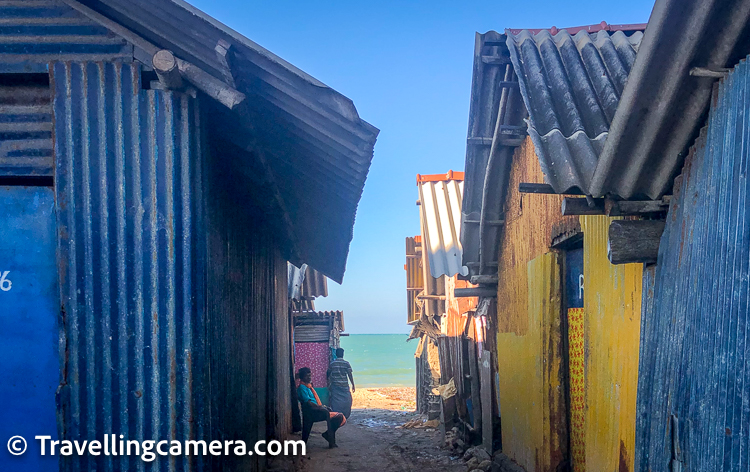
Apart from fishing, Thangachimadam is also known for its beautiful beaches. The town has several small beaches, including the Thangachimadam Beach and the Olaikuda Beach. These beaches offer a serene and peaceful environment and are a popular destination for travelers looking to relax and unwind.
Thangachimadam is also known for its traditional crafts, including handicrafts made from seashells and palm leaves. Visitors can purchase these handicrafts from local markets and shops.
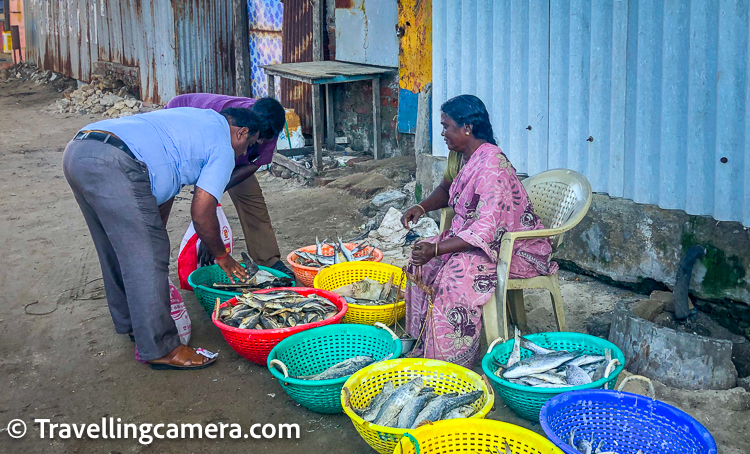
One of the main attractions near Thangachimadam is the Pamban Bridge, which connects Pamban Island to the mainland. The bridge is an engineering marvel and offers stunning views of the surrounding ocean and landscape.
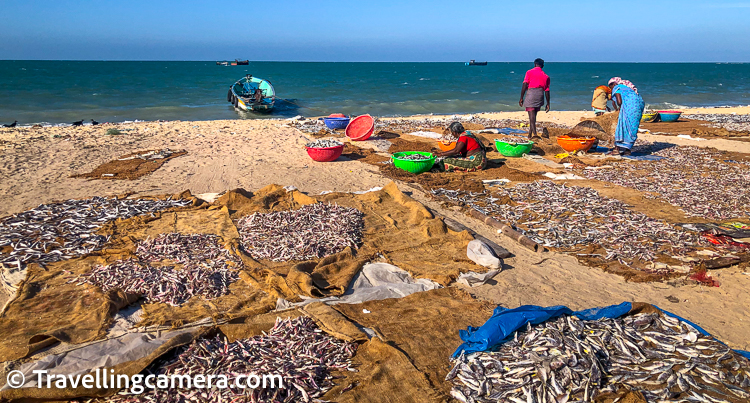
Fishing is a major occupation for the people of Rameshwaram, including the fishermen of Thangachimadam. Here are some of the activities that fishermen in Rameshwaram engage in:
Fishing: Fishing is the primary occupation of the fishermen in Rameshwaram. They use various methods of fishing, including traditional methods like fishing nets and modern methods like trawling. The fishermen go out to sea early in the morning and return with their catch in the evening.
Boat building: Boat building is another activity that the fishermen in Rameshwaram engage in. They build traditional wooden boats using local wood and other materials. These boats are used for fishing and transportation.
Net making: Net making is an important activity for the fishermen in Rameshwaram. They make fishing nets using materials like nylon and cotton. The nets are used for different types of fishing, including trawling and traditional net fishing.
Fish drying: Fish drying is a common practice among the fishermen in Rameshwaram. They dry fish in the sun and sell them in local markets. Dried fish is a popular food item in the region and is used in various local dishes.
Pearl farming: Pearl farming is another activity that some fishermen in Rameshwaram engage in. They cultivate pearls in oysters and sell them in local and international markets.
Visitors to Rameshwaram can witness these activities and learn more about the local fishing industry by visiting the fishing villages and harbors. They can also try their hand at fishing and experience the local way of life. The fishermen in Rameshwaram are known for their hospitality and are always happy to share their knowledge about fishing and their way of life with visitors.

Pearl farming is a traditional occupation in Rameshwaram, which is located on the eastern coast of India. The region is known for its rich marine biodiversity, and the waters around Rameshwaram are ideal for pearl farming.
Pearl farming in Rameshwaram is done using the Pinctada fucata, also known as the Indian pearl oyster. The oysters are cultivated in underwater farms that are located in shallow waters near the shore. The farm consists of a series of nets that are suspended in the water and anchored to the seabed.
The oysters are grown in these nets for a period of two to three years. During this time, the oysters are regularly cleaned and monitored for their growth and health. Once the oysters reach maturity, they are harvested and the pearls are extracted from them.
The process of extracting pearls from the oysters is known as pearl harvesting. It involves carefully opening the oyster and removing the pearl without damaging it. The pearls are then sorted and graded based on their size, shape, and quality.
Pearls from Rameshwaram are known for their unique luster and are highly valued in the international market. The pearl farming industry in Rameshwaram provides employment opportunities for many local people and is an important source of income for the region.
Visitors to Rameshwaram can learn more about pearl farming by visiting the pearl farms and observing the process of pearl harvesting. They can also purchase pearls from local markets and shops, which offer a wide variety of pearl jewelry and souvenirs.

Rameshwaram is known for its delicious seafood dishes, and dried fish is a popular ingredient in many of these dishes. Here are some local dishes that use dried fish:
Karuvadu Kuzhambu: This is a spicy and tangy curry made with dried fish, tamarind, and a blend of spices. It is usually served with steamed rice and is a popular dish in the region.
Nethili Fry: This is a popular snack made with small dried fish, which are marinated in a blend of spices and then fried until crispy. It is a popular snack in Rameshwaram and is served in many local eateries.
Sukka Meen: This is a dry dish made with dried fish, coconut, and a blend of spices. The fish is first marinated with spices and then fried until crispy. It is then tossed with coconut and spices to create a flavorful dish.
Fish Curry: This is a traditional fish curry made with dried fish, tamarind, coconut, and a blend of spices. It is usually served with steamed rice and is a popular dish in the region.
Fish Biriyani: This is a flavorful and aromatic biriyani made with dried fish, rice, and a blend of spices. It is a popular dish in Rameshwaram and is often served during special occasions.
These are just a few of the popular dishes in Rameshwaram that use dried fish. Each of these dishes offers a unique and flavorful taste of the local cuisine and is a must-try for seafood lovers visiting the region.

The coastal waters of Rameshwaram are home to a wide variety of fish species. Here are some of the popular fish found in Rameshwaram:
Tuna: Tuna is a popular fish found in the waters of Rameshwaram. It is a large and meaty fish that is often used in local cuisine.
Sardine: Sardines are small and oily fish that are commonly found in the waters of Rameshwaram. They are a popular ingredient in many local dishes, including curries and fried snacks.
Seer fish: Seer fish, also known as kingfish, is a popular game fish found in the waters of Rameshwaram. It is a large and meaty fish that is often grilled or fried and served with rice or bread.
Pomfret: Pomfret is a popular fish found in the coastal waters of Rameshwaram. It is a flat and round fish that is often fried or grilled and served as a main course in local cuisine.
Mackerel: Mackerel is a popular fish found in the waters of Rameshwaram. It is a small and oily fish that is often used in curries and fried snacks.
Barracuda: Barracuda is a predatory fish that is commonly found in the waters of Rameshwaram. It is a popular game fish and is often grilled or fried and served as a main course in local cuisine.
These are just a few of the popular fish found in the waters of Rameshwaram. The region is known for its rich marine biodiversity and offers a wide variety of fish species for seafood lovers to explore and enjoy.

Fish drying is a popular method of preserving fish in Rameshwaram, which is located on the eastern coast of India. The process involves drying fish in the sun and wind, which removes the moisture and prevents the fish from spoiling. Here is a general overview of the fish drying process:
Selection of fish: The first step in the fish drying process is the selection of fish. The best fish for drying are those that are fresh and have a high oil content, such as sardines and mackerel.
Cleaning the fish: The fish are then cleaned, gutted, and washed in clean water to remove any dirt or debris.
Salting the fish: After cleaning, the fish are salted to help draw out the moisture and prevent bacterial growth. The salt is evenly distributed over the fish, and the excess salt is removed.
Drying the fish: The fish are then laid out on a flat surface and left to dry in the sun and wind. The drying time can vary depending on the weather conditions, but it usually takes around 2-3 days for the fish to be completely dried.
Sorting and packaging the fish: Once the fish are fully dried, they are sorted by size and quality, and then packaged in plastic bags or containers for storage and transportation.
Rehydration: Before cooking, the dried fish is rehydrated by soaking it in water for several hours. This helps to remove the excess salt and rehydrate the fish, making it tender and flavorful.
The process of fish drying is labor-intensive and requires a lot of attention to detail to ensure that the fish is properly dried and preserved. However, it is an effective method of preserving fish and is a popular food item in the region.

The drying process can affect the nutritional value of fish in several ways. Here are some of the ways in which the drying process can affect the nutritional value of the fish:
Loss of water-soluble vitamins: The drying process can lead to the loss of water-soluble vitamins, such as vitamin C and B vitamins. These vitamins are essential for maintaining good health, and their loss can reduce the nutritional value of the fish.
Reduction in protein content: The drying process can also lead to a reduction in the protein content of the fish. This is because the heat and sun exposure can denature the proteins in the fish, making them less effective at providing essential amino acids to the body.
Increase in mineral content: The drying process can also lead to an increase in the mineral content of the fish. This is because the water content of the fish is reduced, which leads to a concentration of minerals like iron and calcium.
Increase in fat content: The drying process can also lead to an increase in the fat content of the fish. This is because the drying process can cause the fish to lose water, while retaining its fat content. This can make the dried fish more calorie-dense than fresh fish.
The drying process can lead to some changes in the nutritional content of fish, which can depend on various factors such as the type of fish, the drying method, and the duration of the drying process. While the drying process can cause some loss in nutritional value, dried fish can still be a good source of protein, minerals, and healthy fats, and can provide a nutritious and flavorful addition to the diet when consumed in moderation.

There are several popular destinations near Thangachimadam that are worth exploring. Here are a few:
Rameshwaram: Rameshwaram is a popular pilgrimage destination and is located around 10 km from Thangachimadam. The town is known for its ancient temples, including the Ramanathaswamy Temple, which is one of the 12 Jyotirlinga temples dedicated to Lord Shiva. The town is also home to several beautiful beaches and is a popular destination for water sports.
Dhanushkodi: Dhanushkodi is a deserted town located around 20 km from Thangachimadam. The town was destroyed in a cyclone in 1964 and is now a ghost town. Visitors can explore the ruins of the town and visit the Dhanushkodi Beach, which offers stunning views of the Bay of Bengal.
Mandapam: Mandapam is a small town located around 20 km from Thangachimadam. The town is known for its beautiful beaches and is a popular destination for water sports. Mandapam is also home to the Gulf of Mannar Marine National Park, which is known for its rich marine biodiversity.
Chettinad: Chettinad is a region located around 100 km from Thangachimadam. The region is known for its unique architecture, which is a blend of Indian and European styles. Visitors can explore the region's beautiful mansions and temples and sample the local cuisine, which is known for its use of spices.
Madurai: Madurai is a popular tourist destination located around 170 km from Thangachimadam. The city is known for its ancient temples, including the Meenakshi Amman Temple, which is dedicated to the goddess Meenakshi. The city is also known for its vibrant markets and is a popular destination for shopping.

When buying dried fish, it's important to look for signs of good quality to ensure that you're getting a product that is safe to eat and has good flavor. Here are some tips on how to tell if the dried fish you're buying is of good quality:
Appearance of the dried fish: Good quality dried fish should have a uniform color and texture, with no discoloration, mold, or signs of spoilage.
Smell of the dried fish: Dried fish should have a mild and pleasant aroma, without any fishy or rancid odors. If the dried fish has a strong, unpleasant odor, it may be a sign that it's not fresh or has not been dried properly.
Texture of the dried fish: Good quality dried fish should be firm and dry to the touch, with no signs of softness or sponginess. If the dried fish feels soft or spongy, it may be a sign that it's not fully dried or has been stored improperly.
Packaging of the dried fish: Good quality dried fish should be properly packaged, with no signs of damage or exposure to moisture. The packaging should be airtight and free from any tears or holes that could allow air or moisture to enter.
By checking for these signs of good quality, you can ensure that the dried fish you're buying is safe to eat and has good flavor. It's also important to purchase dried fish from a reputable vendor who follows proper hygiene and safety practices to ensure that the product is of good quality.

Thangachimadam is a fascinating destination that offers a glimpse into the local culture and way of life in Tamil Nadu. It is a must-visit destination for travelers interested in exploring the natural beauty and rich cultural heritage of the region.

 Delhi to Bhopal Road Trip - The very first day of our 14 days long trip through east coast of India || Noida to Rameshwaram
Delhi to Bhopal Road Trip - The very first day of our 14 days long trip through east coast of India || Noida to Rameshwaram The Majestic Brihadeeshwara Temple: A Glimpse into the Architectural Brilliance of Thanjavur in Tamilnadu, India
The Majestic Brihadeeshwara Temple: A Glimpse into the Architectural Brilliance of Thanjavur in Tamilnadu, India Unlocking the Treasures of Saraswati Mahal Library in Thanjavur, Tamilnadu || Exploring India's oldest and most fascinating collection of manuscripts
Unlocking the Treasures of Saraswati Mahal Library in Thanjavur, Tamilnadu || Exploring India's oldest and most fascinating collection of manuscripts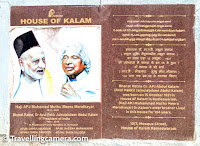 Exploring the Legacy of Dr. APJ Abdul Kalam at House of Kalam: A Journey through His Life and Achievements
Exploring the Legacy of Dr. APJ Abdul Kalam at House of Kalam: A Journey through His Life and Achievements Hotel Gokulam and Golden Minerva Coffee Cafe in Madanapalle, Andhra Pradesh, India || The town that provided us great food and a comfortable night stay
Hotel Gokulam and Golden Minerva Coffee Cafe in Madanapalle, Andhra Pradesh, India || The town that provided us great food and a comfortable night stay Exploring the Architectural Marvels and Historical Significance of Arulmigu Ramanathaswamy Temple in Rameshwaram, Tamilnadu : A Spiritual Journey Through Time
Exploring the Architectural Marvels and Historical Significance of Arulmigu Ramanathaswamy Temple in Rameshwaram, Tamilnadu : A Spiritual Journey Through Time Embracing the Serenity of Sunrise: Exploring Dhanushkodi in the Early Hours of the Morning | Tamilnadu Diaries
Embracing the Serenity of Sunrise: Exploring Dhanushkodi in the Early Hours of the Morning | Tamilnadu Diaries















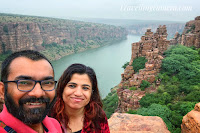

%20to%20see%20the%20Danish%20fort%20in%20Tamilnadu%20state%20of%20India-3.jpg)

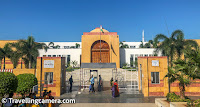







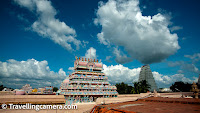

.jpg)
Comments